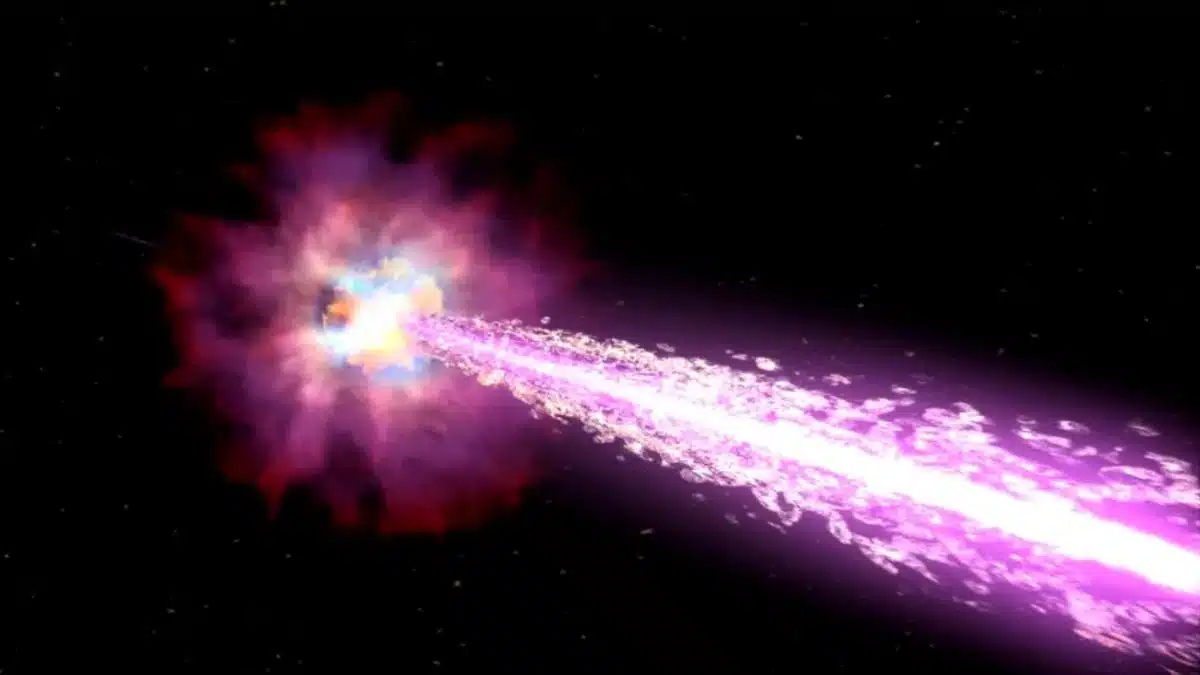New Research Reveals Hercules-Corona Borealis Great Wall’s Expansive Size

Astronomers have made a groundbreaking discovery regarding the Hercules-Corona Borealis Great Wall, a colossal network of galaxies that may be larger than previously thought. Utilizing gamma-ray bursts (GRBs)—the universe’s most luminous explosions—researchers have found that this immense structure extends further than earlier estimates and is located closer to Earth than once believed. This revelation challenges existing theories about the universe’s structure and evolution, prompting a reevaluation of fundamental cosmological principles.
Gamma-Ray Bursts Illuminate Cosmic Structure
Gamma-ray bursts have played a crucial role in both the initial discovery and the recent expansion of knowledge surrounding the Hercules-Corona Borealis Great Wall. These powerful explosions, which occur from the collapse of massive stars or the collision of neutron stars, emit intense jets that can be detected across vast cosmic distances. According to researcher Hakkila, GRBs serve as bright beacons for identifying galaxies, including those that are too faint to observe directly. Their exceptional brightness allows scientists to trace matter throughout the universe with unprecedented clarity. The Great Wall, measuring over 10 billion light-years in length, poses significant challenges to the cosmological principle that suggests a uniform appearance of the universe. Its immense scale indicates potential gaps in current theories and raises questions about the time available for such large structures to form.
Upcoming Mission to Enhance Understanding
NASA’s Fermi Gamma-ray Burst observations have recorded 542 GRB events, yet more comprehensive data is necessary to fully grasp the extent of the Great Wall. Misidentified origins and limited sampling have hindered a complete understanding. Hakkila points to the forthcoming ESA mission, THESEUS (Transient High Energy Sources and Early Universe Surveyor), as a pivotal advancement in this research area. This mission aims to significantly broaden the catalog of known GRBs, especially those at extreme distances. Hakkila emphasizes that THESEUS could provide the observational leverage needed to map the Hercules-Corona Borealis Great Wall in its entirety, thereby refining our understanding of the universe’s large-scale structure.
Implications for Cosmology
The findings regarding the Hercules-Corona Borealis Great Wall have profound implications for cosmology. The structure’s unexpected size and proximity challenge established theories about the universe’s formation and evolution. As researchers continue to refine their measurements and gather more data, the potential for new insights into the cosmos increases. The upcoming THESEUS mission is anticipated to play a critical role in this endeavor, offering a more comprehensive view of the universe’s architecture. As scientists work to unravel the complexities of cosmic structures, the Hercules-Corona Borealis Great Wall stands as a testament to the ever-evolving understanding of our universe.
Observer Voice is the one stop site for National, International news, Sports, Editor’s Choice, Art/culture contents, Quotes and much more. We also cover historical contents. Historical contents includes World History, Indian History, and what happened today. The website also covers Entertainment across the India and World.

